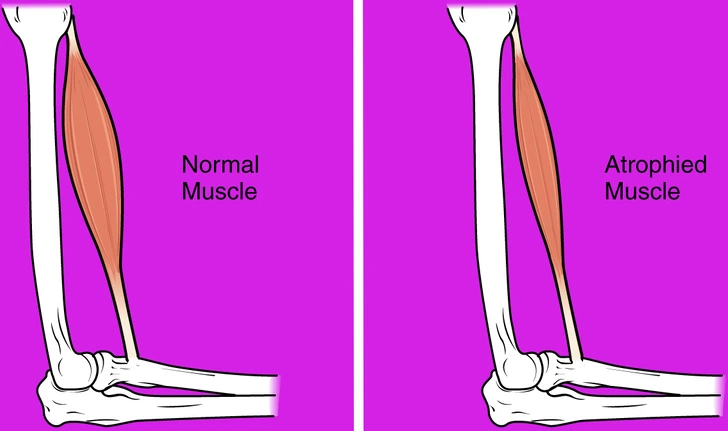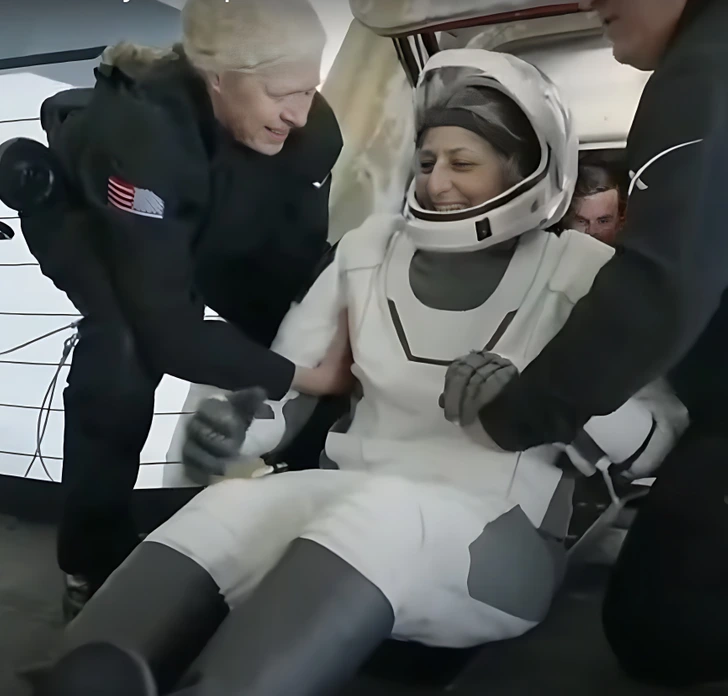Space travel is undeniably exciting, but it also takes a serious toll on the human body. Recently, NASA astronauts Butch Wilmore and Suni Williams found themselves facing the unexpected. What was supposed to be a brief 10-day mission aboard the International Space Station (ISS) turned into a 286-day stay after a malfunction with the thrusters made returning safely impossible. This unexpected extension made them some of the longest-serving NASA astronauts on a single mission.

1. Height Increase: Gaining Inches in Space
One of the most intriguing effects of long-term space travel is height increase. In the absence of gravity, the spine experiences decompression. On Earth, gravity naturally compresses the spine, but in microgravity, astronauts can become taller—sometimes by up to 3% of their height.
During the first few days of weightlessness, the spinal discs expand, leading to a noticeable increase in height. For a 6-foot-tall astronaut, that could mean gaining almost two inches. However, this change is temporary. Once astronauts return to Earth, gravity takes over again, and their height reverts to normal within a few days.
Video:
Here’s what happens to astronauts’ physical and mental health after months in space
Why It Matters: While gaining height sounds appealing, the rapid change can put stress on the spinal column, sometimes causing back discomfort. NASA continues to study the long-term effects to ensure astronaut health during prolonged missions.
2. Bone Density Loss: Fragile Bones After Space Travel

Gravity on Earth naturally puts stress on our bones, helping maintain their density. In space, however, this stress is absent, leading to a gradual loss of bone density. Weight-bearing bones, such as those in the hips and legs, are particularly affected. Astronauts can lose approximately 1% of bone mass per month—an alarming rate compared to bone loss seen in elderly individuals on Earth.
This loss of density increases the risk of fractures and poses significant challenges for extended space missions, like those planned for Mars exploration.
To mitigate bone density loss, astronauts engage in regular resistance and weight-bearing exercises aboard the ISS. Specialized equipment like advanced treadmills and resistance devices helps simulate the effects of gravity, reducing bone loss to some extent.
3. Cardiovascular Changes: A Heart That Works Less Hard

On Earth, the heart constantly works against gravity to pump blood upward. In microgravity, this challenge disappears, leading to a reduction in heart muscle mass and volume. This can result in a condition called orthostatic intolerance—difficulty standing upright without feeling faint—when astronauts return to Earth.
The cardiovascular system adapts to the space environment by decreasing blood volume and reducing heart rate. Upon returning, astronauts may experience low blood pressure and dizziness as their hearts readjust to gravity.
Most astronauts undergo rehabilitation to help the cardiovascular system reacclimate to Earth’s gravity, often involving monitored exercise and hydration strategies.
4. Fluid Redistribution: A Puffy Face and Stuffy Nose

One of the most noticeable physical changes astronauts experience is fluid redistribution. On Earth, gravity pulls bodily fluids downward, but in space, fluids shift toward the head. This can cause facial puffiness, nasal congestion, and a feeling similar to having a constant cold.
This fluid shift increases pressure within the skull, sometimes leading to headaches and even vision issues. The phenomenon, known as “moon face,” is common among astronauts during long missions.
Video:
NASA Astronauts to Return Home
To alleviate discomfort, astronauts perform specific exercises and use lower body negative pressure devices to encourage fluid movement away from the upper body.
5. Increased Radiation Exposure: A Silent Risk
The Earth’s atmosphere and magnetic field protect us from most cosmic radiation. In space, especially on the ISS, astronauts are exposed to higher levels of radiation. This exposure increases the risk of developing cancer and may also impact cognitive function over time.
Although the ISS offers some shielding, it doesn’t completely block cosmic rays. Longer missions, such as those planned for Mars, will require enhanced radiation protection to safeguard astronauts’ health.
NASA continues to study radiation’s long-term effects and develop better shielding technologies to minimize exposure.
6. Vision Impairment: Spaceflight-Associated Neuro-Ocular Syndrome (SANS)

One of the more concerning effects of prolonged space travel is vision impairment, scientifically known as Spaceflight-Associated Neuro-Ocular Syndrome (SANS). The upward fluid shift in space can increase intracranial pressure, compressing the optic nerve and flattening the back of the eyeball. This leads to vision changes, sometimes blurring or making objects appear distorted.
While some of these vision changes are temporary, there is growing concern about potential long-term effects. Some astronauts continue to experience altered vision months after returning to Earth.
Ongoing research aims to understand why some astronauts are more affected than others, with the goal of developing preventive techniques.
7. Immune System Alterations: Lower Defenses in Space
Space travel takes a toll on the immune system, weakening the body’s ability to fight infections. Studies show that prolonged spaceflight can alter immune cell function, making astronauts more susceptible to illnesses. Additionally, the stress of space travel can reactivate latent viruses, such as herpes simplex, which typically remain dormant on Earth.
Astronauts follow strict hygiene protocols and maintain balanced diets to support their immune health. Scientists are also investigating potential vaccines to mitigate risks.
8. Muscle Atrophy: Losing Strength Without Gravity

In space, muscles don’t have to support the body’s weight, leading to atrophy, or muscle loss. Without consistent exercise, astronauts can lose up to 20% of their muscle mass within just a few weeks. This is especially concerning during missions lasting several months.
Astronauts engage in two hours of daily exercise, including resistance training and cardiovascular workouts, to counteract muscle loss. Despite their efforts, some muscle weakening is inevitable, and rehabilitation on Earth is necessary to rebuild strength.

After returning, astronauts undergo months of physical therapy to regain muscle function and mobility.
The Human Body’s Incredible Adaptability
Space travel remains one of humanity’s most ambitious endeavors. As fascinating as it is to explore new frontiers, the effects on the human body are profound and complex. From growing taller to losing bone density, astronauts face unique challenges that require innovative solutions.
Research into these changes helps us better prepare for longer missions, like those to Mars, and ensures that space travelers remain healthy during and after their journeys. Earth’s gravity shapes our biology in ways we often take for granted, and understanding these effects is crucial as we continue to push the boundaries of human exploration.


